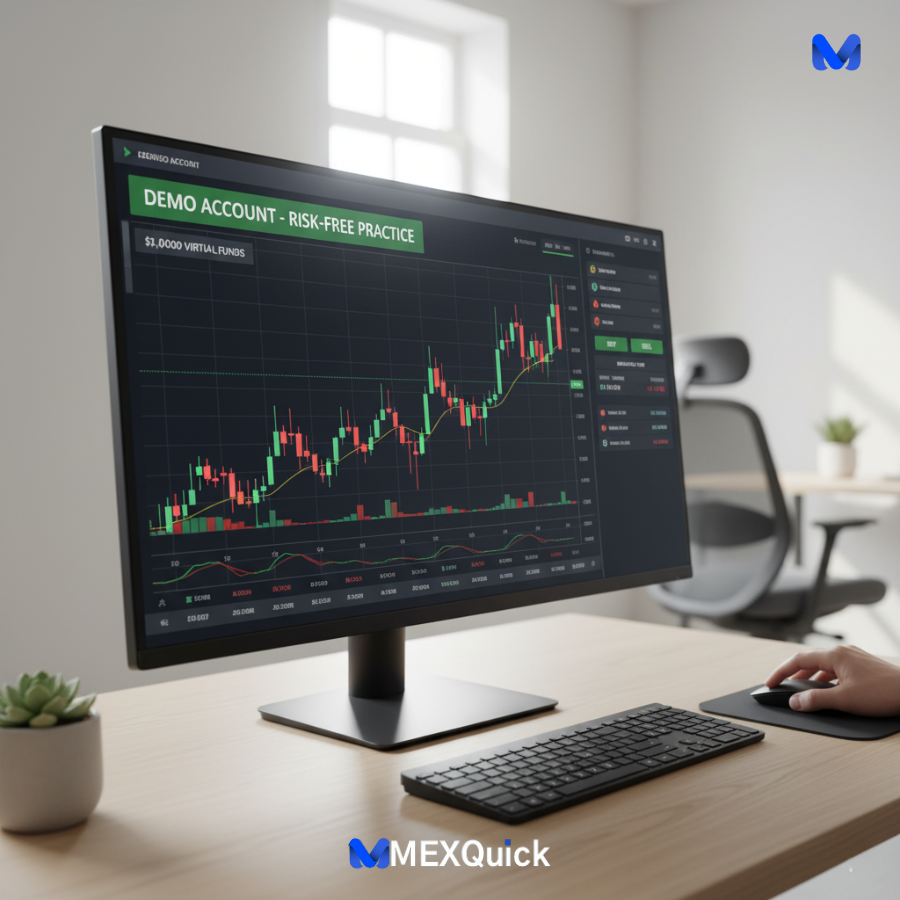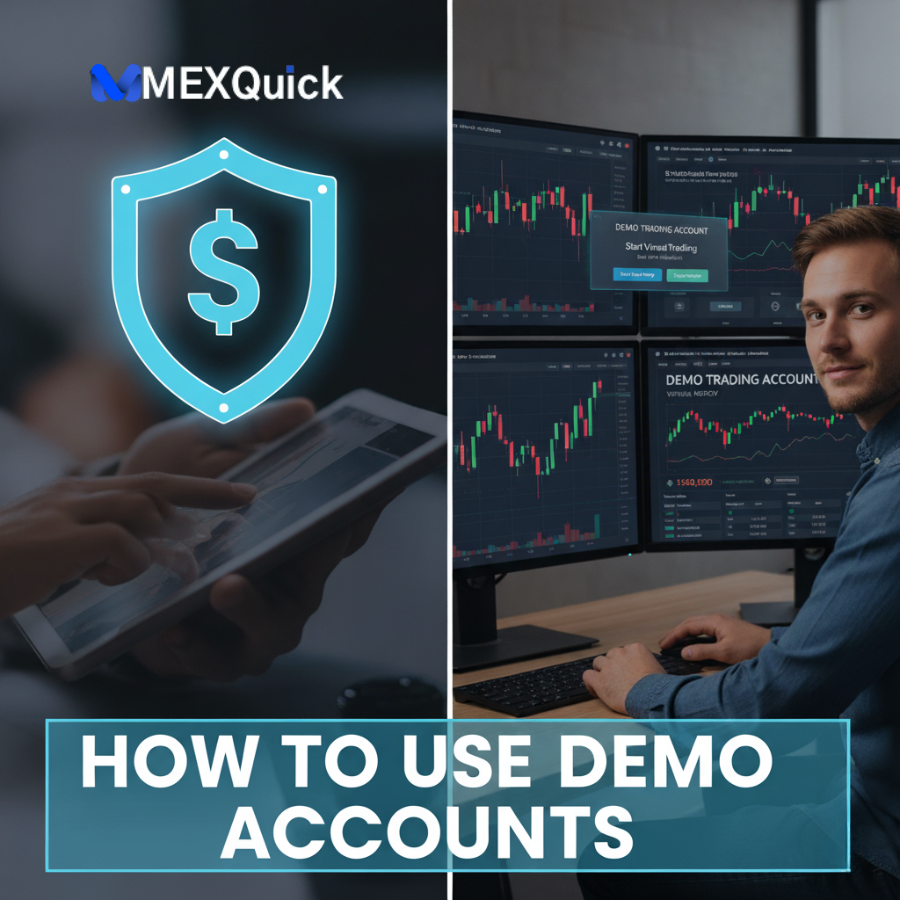My first real trade was a disaster. I felt a surge of adrenaline, ignored my plan, and clicked ‘buy’ based on a gut feeling. I lost money in minutes. The problem wasn’t the market—it was me. I hadn’t practiced. I hadn’t made my mistakes in a safe environment first. That’s the exact purpose of a demo trading account.
Think of a demo trading account as a flight simulator for financial markets. Would you want to learn to fly a real plane during a storm without any practice? Of course not. Trading with real money without using a risk-free trading simulator is just as risky.
This guide will show you how to use a demo trading account correctly. It’s not just about clicking buttons; it’s about building the discipline, strategy, and emotional control you need to succeed when real money is on the line. I’ll give you a step-by-step plan to transform your virtual trading account from a simple toy into your most powerful training tool. Let’s get you prepared.
What is a Demo Trading Account? (And Why It’s Your #1 Secret Weapon)
A demo trading account is a practice account offered by most online brokers. It’s a fully functional online trading simulator that feeds on live market data. The key difference? You trade with virtual money—typically a large starting balance like $10,000, $50,000, or even $100,000.
This setup provides a genuine trading experience without any financial risk. It’s the single best way for a beginner to understand how markets move and how a trading platform works. The core benefit is the opportunity for risk-free trading; you can test strategies and make mistakes without any real-world consequences, which is an invaluable part of the learning process.
How to Get Started with Your Demo Account: A 5-Step Blueprint
Getting started is straightforward. Follow this blueprint to set yourself up for a productive practice session.
1. Choose a Reputable Broker
Your first step is to select a broker known for good educational resources and a robust trading platform. Many major brokers like IG, Forex.com, and OANDA offer free demo accounts. Ensure their virtual trading account mirrors the functionality of their live platform.
2. Download and Install the Trading Platform
Most brokers offer a desktop platform (like MetaTrader 4 or 5) and a mobile app. Download both. Your goal is to become comfortable with the interface you’ll eventually use for real trading.
3. Log In and Familiarize Yourself
Once you log in with your demo credentials, take 30 minutes to just explore. Don’t place a trade yet.
-
Find the watchlists and how to add instruments.
-
Locate the charting tools.
-
Understand how to place different order types (Market, Limit, Stop-Loss).
4. Set Realistic Practice Goals
A demo trading account is useless without a goal. Don’t just aim to “make money.” Instead, set specific, process-oriented goals like:
-
“I will practice placing 10 trades using only stop-loss and take-profit orders.”
-
“I will learn to draw support and resistance lines on the chart.”
5. Treat the Virtual Money as if It’s Real
This is the most critical rule. The biggest mistake traders make is treating the virtual trading account like a casino. If you recklessly risk $5,000 of virtual cash on one trade, you’re building terrible habits. Mentally commit to treating every virtual dollar as if it were real. This psychological shift is what makes the practice effective.
Maximizing Your Demo Account: Beyond Basic Practice

To truly benefit, you need to move beyond simple buying and selling. Use your online trading simulator to master these three critical areas.
Test and Refine Your Trading Strategy
A trading strategy is a set of rules that guides your decisions. Your demo account is the perfect laboratory to test yours.
-
Does your strategy work in a trending market? What about a sideways market?
-
What is your win rate? What is your average profit versus average loss?
-
Tweak your rules and see how the results change. This is the essence of risk-free trading improvement.
Master Risk Management
This is more important than finding profitable trades. Use your demo account to drill proper risk management into your muscle memory.
-
Practice Position Sizing: Never risk more than 1-2% of your virtual capital on a single trade. If your account has $10,000, your maximum loss per trade should be $100-$200.
-
Use Stop-Loss Orders Religiously: Every single trade you place must have a stop-loss order set. This is non-negotiable.
Manage Your Emotions
Even with virtual money, you’ll feel a flicker of excitement when a trade goes your way and frustration when it goes against you. Pay attention to these feelings. The goal is to recognize these emotions now, so they don’t control you later. If you find yourself breaking your rules due to excitement or fear during risk-free trading, you are not yet ready for a live account.
When Are You Ready to Go Live? 3 Key Benchmarks
The demo trading account is a means to an end, not the end itself. How do you know when you’re ready to transition? Look for these three benchmarks:
-
You Are Consistently Profitable Over at Least 2 Months: Consistency is key. Anyone can get lucky in a week. Can you execute your plan and show steady, modest gains over 60 days in your virtual trading account?
-
Your Trading Plan is Automated: You’re not guessing anymore. You enter, exit, and manage risk based on your pre-defined rules without hesitation or emotion.
-
You’ve Experienced a “Bad Patch” and Recovered: Markets aren’t always sunny. Have you navigated a string of losses in your simulator without blowing up your account? Did you stick to your plan? If yes, you’ve passed a crucial test.
Conclusion: Your Launchpad to Confident Trading
A demo trading account is far more than a beginner’s tool. It’s a perpetual safety net, a strategy-testing lab, and a discipline-building gym all rolled into one. The risk-free trading environment it provides is the greatest gift a new trader can receive. By using an online trading simulator correctly—treating virtual money as real, focusing on risk management, and testing strategies—you build the foundation for long-term success.
The financial markets aren’t going anywhere. The goal isn’t to start fast; it’s to start smart and last long.
Your Action Plan Starts Now:
-
Open a demo account with a reputable broker today.
-
Commit to one hour of focused practice daily for the next month.
-
Document your progress. Keep a journal of your trades and emotions.
I want to hear from you. Have you used a demo account before? What was the most valuable lesson you learned? Or, if you’re just starting, what part of trading are you most excited to practice risk-free? Share your thoughts in the comments below. If this guide was helpful, please share it with a friend who is starting their journey.

